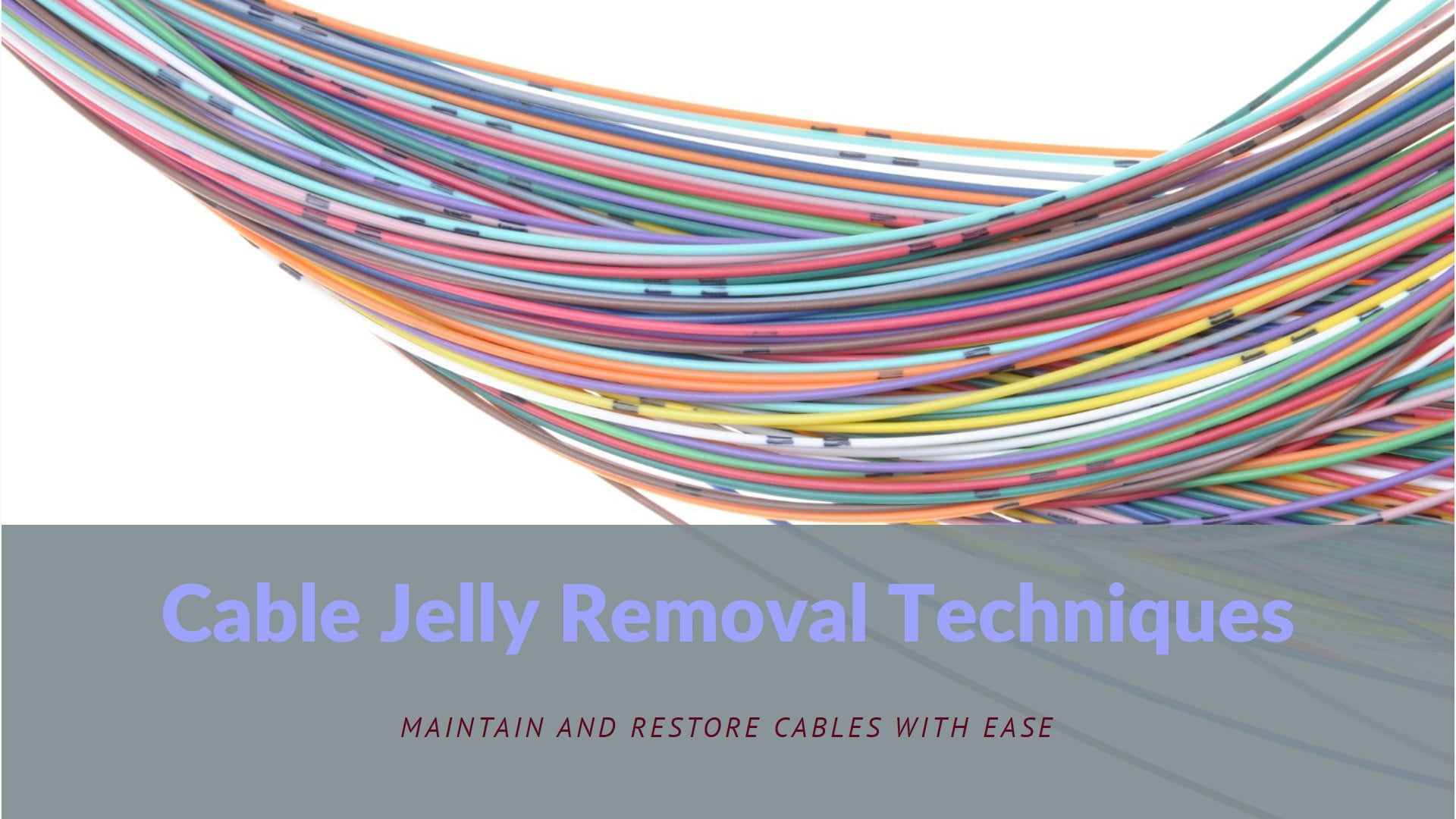Removing cable jelly during repairs is a crucial step in ensuring proper cable maintenance and restoration. Here are several methods and techniques used for removing cable jelly:
1. Mechanical Removal:
– Wiping: Use lint-free cloths or wipes to remove bulk jelly.
– Scraping: Employ plastic or wooden scrapers to gently remove thicker layers of gel.
– Brushing: Utilize soft-bristled brushes to clean between conductors.
2. Chemical Solvents:
– D-Limonene-based cleaners: Biodegradable and effective for most cable jellies.
– Citrus-based solvents: Similar to D-Limonene, environmentally friendly.
– Isopropyl alcohol: Effective for lighter jellies and final cleaning.
– Specialized cable jelly removers: Formulated specifically for this purpose.
3. Heat Application:
– Heat guns: Warm the jelly to reduce viscosity, making it easier to wipe away.
– Warm cloths: Apply warm, damp cloths to soften the jelly.
4. Absorbent Materials:
– Paper towels: Use to absorb and wipe away softened jelly.
– Disposable wipes: Pre-moistened wipes designed for industrial cleaning.
5. Compressed Air:
– Use compressed air to blow out loose jelly particles after initial cleaning.
– Effective for cleaning hard-to-reach areas between conductors.
6. Ultrasonic Cleaning:
– For small components or connectors, ultrasonic cleaning baths can be effective.
– Use appropriate cleaning solutions designed for cable jelly removal.
7. Vacuum Extraction:
– Industrial vacuums with appropriate attachments can remove loose jelly.
– Particularly useful for larger cable bundles.
8. Combination Methods:
– Apply solvent, then use mechanical removal techniques.
– Heat application followed by wiping or scraping.
9. Specialized Tools:
– Cable jelly removal sponges: Designed to absorb and trap jelly.
– Gel-removing combs: For cleaning between individual conductors.
10. High-Pressure Cleaning:
– For outdoor or industrial applications, high-pressure water or solvent jets can be used.
– Requires proper containment and disposal of waste.
11. Dry Ice Blasting:
– Uses pellets of dry ice to remove jelly without leaving residue.
– More commonly used in large-scale or industrial applications.
12. Microfiber Cloths:
– Effective for final cleaning and removing residual jelly.
– Can be used dry or with cleaning solvents.
Safety Considerations:
1. Ventilation: Ensure proper ventilation when using solvents.
2. PPE: Wear appropriate personal protective equipment (gloves, eye protection).
3. Chemical Compatibility: Ensure cleaning methods are compatible with cable materials.
4. Electrical Safety: Disconnect and properly ground cables before cleaning.
5. Environmental Concerns: Properly dispose of used cleaning materials and remove jelly.
Procedural Steps:
1. Assess the type and amount of jelly to be removed.
2. Choose the appropriate removal method(s).
3. Protect surrounding areas from contamination.
4. Apply the chosen removal technique.
5. Clean thoroughly, ensuring no residue remains.
6. Inspect the cleaned area to ensure complete jelly removal.
7. Allow the cable to dry completely before proceeding with repairs or re-termination.
Considerations for Different Cable Types:
– Fiber Optic Cables: Use extra caution to avoid damaging delicate fibers.
– Coaxial Cables: Pay attention to cleaning around the center conductor and shield.
– Twisted Pair Cables: Ensure cleaning between individual pairs without damaging the insulation.
Post-Cleaning:
– After jelly removal, inspect cables for any damage that may have been hidden by the jelly.
– Apply appropriate protective measures (e.g., new water-blocking materials) if required.
– Properly terminate or splice the cable following standard procedures.
Remember, the choice of method depends on the type of cable, the specific jelly compound used, the extent of the repair needed, and the working environment. Always refer to manufacturer guidelines and industry best practices for the specific cable type you’re working with. Proper training is essential for personnel performing these cleaning procedures to ensure both effective jelly removal and cable integrity.

This is Kamran Malekian working in the petroleum jelly manufacturing industry for Navid Noor Company since 2013 I am eager to make content in this industry and have a good impact on professional users and people using cosmetic and pharmaceutical products.











No comment